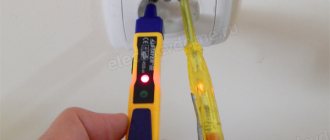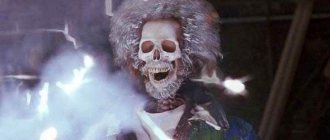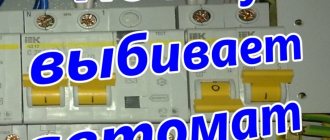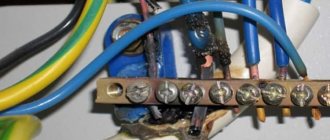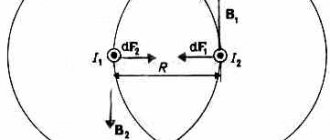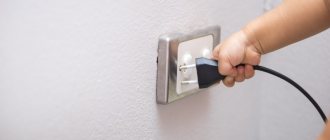Theory
First of all, let's take a short excursion into the school physics course to remember what electric current, voltage and resistance are. Electric current (accepted designation - I) is nothing more than the movement of charged particles (electrons, ions, etc.). An important condition for their directional movement of charges is the potential difference (voltage, usually designated U) between two points of the electrical circuit.
Now consider such a physical quantity as resistance (accepted notation R). It refers to the obstruction of a conductor from the flow of electric current through it. The opposite concept to resistance is conductance. It depends on criteria such as the length of the conductor, its cross-section, as well as the resistivity of the material. The conductor resistance can be calculated using the formula: R = (l * p) / S, l – length, S – cross-section, p – resistivity (tabular value).
These theoretical calculations will be enough to understand why birds are not electrocuted on power line wires. If you have questions about the theoretical part, you can get more detailed information from other publications on our website. We will move on directly to the consideration of the phenomenon.
How to protect people and birds from electric shock?
Electric current is a dangerous “enemy” that should not be trifled with. To protect you and explain how you can prevent birds from harm, I will give some practical advice in this direction.
| Adviсe | Description |
| Tip #1. | Never touch exposed wires. Even if you need to check if the electricity has gone out. There is a special indicator for such manipulations. |
| Tip #2. | Even if the situation is desperate and you need to touch part of the wire (say, during a repair), do it only with the back of your hand. If you touch it with your palm, you will be “short-circuited” from the electric shock and you will not be able to open your hand. |
| Tip #3. | Always turn off the power when carrying out wiring repairs. Don't joke and don't think it will work out. Your life is on the line. |
| Tip #4. | To keep our feathered friends safe, make sure that authorized agencies install “bird guards”—small devices that prevent birds from landing on dangerous wires. Nowadays, the trend towards installing them is gaining momentum, but not too quickly. |
Bird protection devices on wires
Important: an electric current of 0.1 A can cause irreparable harm to a person - the functioning of the heart can be impaired, which will lead to death. To avoid electrocution, always follow safety rules and do not take risks. Even if you think that by standing on something other than the ground you have a chance of avoiding the blow, remember that this probability is negligible.
Explanation of why birds on wires are not shocked:
What happens to birds on wires?
To solve the problem, it is necessary to consider the introductory conditions. In this case they are as follows:
- A power line wire through which high voltage electricity flows.
- Dielectric in the form of air surrounding high-voltage wires and cables.
- Birds sitting calmly on the wires and apparently not feeling any discomfort.
Birds that have taken a fancy to wires
To explain this, it is enough to remember that electric current travels along the path of least resistance. A bird sitting on a wire can be thought of as a resistor bridged by a conductor. As a result, the internal resistance of the bird's body will be higher than that of the conductor on which it rests with both paws. In addition, on the flyers' paws there is a layer of keratinized scales that act as insulators at points of contact with the wires.
Resistance is futile
As a result, we have a resistor whose resistance is significantly higher than that of the shunt conductor. This does not allow electric current to pass through the bird's body, but at the same time a potential is formed on it equal to the voltage in the power line.
Please note that birds fly around power lines with a voltage class of 220.0 kV or more, and in wet weather, lines of 110.0 kV. This is explained by the formation of high-intensity electromagnetic fields and corona discharges on the wires of overhead lines. The exception is some birds of prey; they can also be observed on 330.0 kV lines. According to ornithologists, this is explained by the presence of a certain resistance to the effects of intense electromagnetic fields.
Formation of corona discharges on high-voltage power lines.
Why do birds love to sit on wires so much?
Since birds can be at risk of electrocution or even death, why are they so drawn to sitting on power lines? There are simple and obvious explanations for this.
- They, unlike people, simply do not know that wires are not the safest place.
- Birds feel safer in the air than on the ground. Here cats and other terrestrial predators will not be able to reach them.
- Birds often make nests on wires. The reason has much in common with the previous one: in order to protect their offspring from enemies, birds build nests away from the ground.
At the same time, birds sense electromagnetic fields well. They will never sit on high-voltage lines with voltages over 200 kilovolts due to the magnetic fields that arise around them. Birds are able to detect so-called corona discharges that occur when air is ionized under the influence of electromagnetic fields along power lines. Thanks to this unique feature, birds choose their roost wisely.
Conditions under which a bird will be electrocuted and die
As already mentioned in the theoretical part, a potential difference is required to generate an electric current. Therefore, in order for a bird to be “shocked” by current, it must touch the adjacent wire (for example, with its wings or beak, since this would be problematic to do with a bird’s legs), which will lead to an interphase short circuit or short circuit to the lightning protection or zero line.
Naturally, such a “trick” is only available for large birds whose wingspan is sufficient to touch the neighboring cable. A sparrow is unlikely to succeed, but if a crow sits on the wire, it may well reach another phase. As a result, current will flow through its body, which will lead to the death of the bird.
Naturally, if insulated wires are used in the overhead line, then there is no voltage difference, and, consequently, the discharge current does not pass through the bird’s body. This is due to the high resistance of the insulation, which is a dielectric that does not allow both direct current and alternating voltage to pass through.
What happens if a person hangs on the wires?
People, like birds, can touch a live wire, but unlike our feathered friends, a person cannot fly up to the cable. Special equipment is used to work with wires at height.
Today, work with high-voltage wires is carried out by special electricians. Their direct responsibility is to maintain power lines at height. It is possible to work in such conditions if special equipment and equipment are used to ensure safety.
Working with high electrical voltage is very dangerous, which is why every company has certain instructions to ensure safe working conditions.
| The human body consists of seventy percent water, so even 0.1A of current can be fatal. To make it more clear, a 100-watt light bulb passes a current of 0.5 Amperes through itself, and literally half a second is enough for the heart’s rhythm to be disrupted and it to stop. |
Today on the Internet you can see a lot of video material showing how paratroopers land on high-voltage transmission lines. If you behave correctly in a suspended state, you can remain alive and wait until the power is turned off to descend to the ground.
Very often situations occur at home when it is necessary to correct live wiring. If you do not have certain knowledge and experience, then it is better to entrust this work to professionals who know and can even connect live wires.
If the light goes out, you can check the voltage using a special indicator. However, after such a check, you should not immediately grab the exposed wires, because perhaps the indicator simply does not work, and then there is a chance of getting an electric shock. To prevent such trouble, you can check the tension with your hand, but only with the outer part of your palm.
If you grasp a live wire with your palm, then under the influence of current, your hand will shrink and it will be problematic to unhook from the cable. By using the outer part of your palm, you will feel the stress on your hand, but you can tear your hand off, thereby avoiding big trouble.
The problem of bird outages
While most people believe that birds are not susceptible to electric shocks on overhead lines, statistics indicate different results. In particular, the majority of US electric companies (about 87% to be exact) attribute many power outages to birds. Note that similar problems are, to one degree or another, characteristic of Russia, and in certain regions, “bird” blackouts require the adoption of radical measures.
Research conducted in the Moscow region showed that on average there are about 150 charred bird remains for every 10.0 km of power lines. That is, they are killed by electric shock, so the stories about the invulnerability of birds are somewhat exaggerated.
It should be noted that it is not the birds themselves that cause more harm to electrical equipment, but their excrement. If they get on insulators and other electrical equipment, they can cause a short circuit. Moreover, even small birds can distinguish themselves in this way if they gather in sufficient numbers.
Collective nests are also dangerous because the weight of the flock can greatly pull down the power lines. When the birds simultaneously leave the overhead line, its wires may overlap when straightened, which will provoke a short circuit. This can be avoided by strengthening the overhead line by installing a double wire.
More exotic causes of avian outages are also not so common, for example, woodpeckers destroying wooden supports or birds eating the ribs of insulators made on a polymer base.
Equally problematic are attempts to nest on supports. When building nests, birds come across not only branches, but also pieces of wire, which, when brought into the nest, can bypass the insulators or cause an interphase short circuit.
Nest on a support
Even if there are no wires or other conductive elements in the sockets, such a structure, if wet during rain, can pose a risk of short circuiting.
Scientists explain why birds are not electrocuted on wires
So, we found out what drives electric current. For its passage, a potential is required, the number of charged particles in which is greater or less.
Let's say we have a wire and there is a bird. A wire is a potential with a certain number of charged particles. In order for it to give an electric shock, it needs to come into contact with another potential.
Now imagine that a bird has landed on the wire. She was not electrocuted. Why? Because the bird is not another potential. It is not a wire, it does not contain more or less charged particles.
On the contrary, due to the fact that she sat with both paws on one wire, and her paws are at the same level and at a short distance, the bird itself becomes a potential. But not with a different number of particles, but with the additional potential of the wire.
And if the potentials are the same, that is, the number of charged particles in them is the same, then the current will not flow. This way, the wire will not shock the bird either.
In such a situation, when a bird sits on a wire and becomes its potential, the electric circle does not close, the electric current does not pass, the bird remains alive and well.
In addition, there are other related factors that prevent electric shock.
The first is the air that surrounds the bird and the wire. Air is known to be a dielectric, so it cannot cause a current reaction.
The second is the bird’s feet. They are so small and protected with a special repulsive coating that they simply prevent them from harming an innocent bird.
As a result, we get the following picture.
| BEFORE | AFTER |
| There is a wire and there is a bird that flies in the air. Both “quantities” do not touch and do not pose a threat to each other. | There is a wire and a bird that lands on it. At the moment of landing, the bird becomes the potential of a wire with the same number of particles. The voltage is uniform, there are no conditions for the passage of current. The bird is not in any danger. |
It turns out that the explanation for such strangeness is more than banal. This is not a miracle at all, as many people think, these are just the laws of physics and nature.
Fighting bird outages
The PUE has a paragraph dedicated to this problem (clause 5.7.10). It says that in places where there are large concentrations of birds that create intense contamination of insulators with droppings, as well as in nesting areas, it is necessary to install special repellent devices that do not cause damage to birds. Since there is no more detailed information in the Rules on repellent devices, let us turn to the experience of other countries.
In particular, in the USA, in order to prevent large birds from touching phase wires, the size of the upper posts of supports is increased. Their height is increased compared to standard models by 40.0 cm, and the length on the traverse side is increased by 30.0 cm.
As for the problem of mass nesting on electrical poles, the only effective solution is to install a special site where there is a “prepared” nest. Dropping nests (during their abandonment) does not produce results; next year the nests will be restored. Attempts to deprive birds of material for construction also turned out to be futile.
At one time, special steel “hedgehogs” were installed in landing and nesting areas. The method turned out to be effective, but was prohibited by environmentalists due to the high probability of injury to the bird when attempting to land. Replacing steel rods with plastic ones had the opposite effect; birds began to bite the rods and use them as nesting materials. As a result, electric companies had to return to installing special sites for nests.
Note that nesting can be controlled by an installation that generates light flashes in a random order during the night.
To protect against bird droppings, installing a special “umbrella” over a garland of insulators helps. Now many manufacturers produce various models of polymer insulators, in which the upper rib is significantly larger than that of other insulators.
Polymer insulators: 1) – ordinary; 2) with protective umbrella
The diameter of such an upper rib is about 45.0-50.0 cm, which is excellent protection both from raindrops and droppings. Note that attempts to scare away birds using special devices and models that imitate predatory species did not have the desired effect for a long time. After a few weeks, the birds got used to the repellents and stopped noticing them.
"Personal protection"
There are several factors that explain why birds on wires are not electrocuted. Let's look at the biological ones first, although they are less significant. Firstly, there is a layer of keratinized scales on the flyers' paws. To some extent, they act as insulators, although rather weak ones. Secondly, birds are able to sense the strength of the electromagnetic field. If a power line produces a voltage of 500 kV, then birds simply avoid landing on it.
It is curious that birds preferentially choose insulated wires when landing. It is difficult to say whether this is another reason why birds do not get electrocuted on wires: perhaps it is simply more pleasant and convenient for them to rest their paws on the insulation. Although some scientists are of the opinion that this also triggers the protective sensitivity of flyers.


